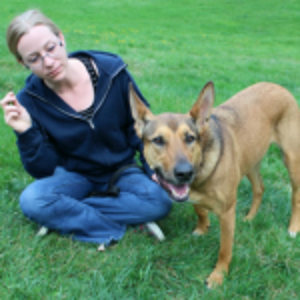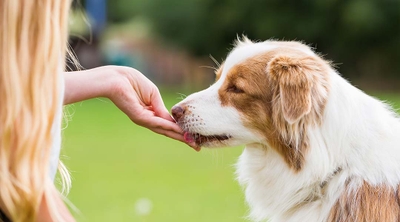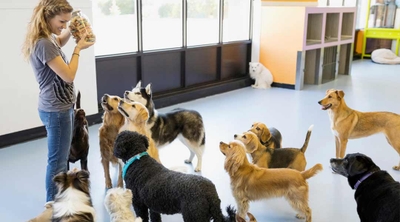5 ways to help your dog lose weight
4 min read
Is your dog a little overweight? If so, you’re not alone. According to the Association for Pet Obesity Prevention. more than 50% of American pets are overweight. But unfortunately, that extra weight can cause a lot of health issues for our pets. If your dog needs to shed a few pounds, here are a few simple steps for helping your dog lose weight.
1. Cut down your dog’s caloric intake
The first step you can take to help your dog lose weight is to understand how many calories your dog needs based its breed, size, and activity level. If you’re relying on the feeding recommendations on dog food labels, you might be giving your dog more calories than it needs. The feeding recommendations on dog food labels aren’t going to be right for every dog. Food label recommendations are estimates based on a dog’s size, not their activity level. A working Border Collie on a farm will need more calories than a Schnauzer whose daily activities include sunbathing and lounging on the couch. Yet they’re roughly the same weight, so if you were to go by what the food label recommends, you’d feed them the same amount.
If you’ve been feeding them the same food for a while and your dog is gaining weight, it’s time to consider cutting down their portions. Start by decreasing their portions by small increments and keep track of your dog’s weight. If you’re unsure how much to feed your dog, consult your veterinarian. They’ll be able to come up with a diet plan that’s right for your dog and its unique needs.
2. Measure out your dog’s meals
To help your dog lose weight be sure to measure out their meals with a measuring cup or scale. When it comes to measuring meals, guessing won’t cut it. Keeping track of the exact amount your dog is eating every day will help determine whether your weight loss plan is working or not.
When it comes to feeding your dog, one miscalculation of just a few ounces can greatly affect your dog’s weight, especially with smaller dogs. If you feed your dog 1 cup (8 ounces) a day and you give them just one extra ounce by miscalculating, that’s a 12% increase. Pre-measuring meals will help you stay consistent and is an efficient way to feed a hungry dog in a hurry.
3. Provide your dog with regular exercise
Do you walk your dog every day? If not, it’s time to start. Daily walks will help your dog lose weight, providing mental stimulation that your dog can’t get indoors. It’s the one time of the day when they can go out and explore and find out what’s going on in the world around them.
Besides your daily walk, one of the easiest ways to get your dog active is to engage them in more play. A few short sessions of play every day not only burns calories, but it will also enrich your dog’s life by giving them a sense of purpose and routine. A few of the games you can play with your dog to keep them active are:
- Fetch
- Tug of War
- Chasing Bubbles
- Frisbee
- Hide & Seek
When starting a new exercise plan for your dog remember to take it slowly by gradually increasing their daily activity. Like us, our dogs can injure themselves and get sore if they overextend themselves.
4. Cut down on extra snacks & treats
Our dogs love treats, and it’s easy to get carried away when we see how happy all those extra snacks make them. But all those extra calories add up, and as we all know, can be difficult to work off.
If you still want to reward your dog with treats, try cutting them in half or quarters. Our dogs don’t care about the size of snacks. They’re happy that they’re getting them. If you don’t have any low-calorie treats, try fruits & veggies to establish healthy eating habits for dogs such as:
- Apples (remove the seeds)
- Strawberries
- Carrots
- Blueberries
- Broccoli
- Cucumber
- Celeryv
- Watermelon (remove the seeds)
5. Keep track of your dog’s weight loss progress
When starting a weight loss program for your dog it’s important to keep track of their progress. Take note of how much exercise they’re getting, how much food they’re eating and how many extra snacks they get each day. There are even mobile apps for your dog and wearable technology to help you monitor their exercise.
Weigh them regularly to see how your plan is working. According to VCA Animal Hospitals, a safe weight loss for most dogs is 3-5% body weight loss per month. If your dog started at 50 pounds, you’d be aiming for them to lose around 2.5 pounds per month.
If you don’t have a scale at home to weigh your dog, you can take a trip to the vet’s office and use theirs. Not only is it a convenient way to weigh your dog, but it’s also a nice way to let your dog know that the vet’s office is more than just a scary place where they get poked and prodded.
Remember, all dogs are different, and some will lose weight more quickly than others. If your dog still isn’t losing weight after putting them on a weight loss program, it’s time to schedule an appointment with your veterinarian to rule out any medical issues.




